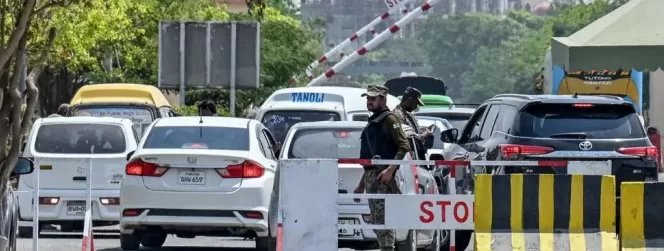
From April 22nd to May 11th, 2025 South Asia was pushed to the brink of its most dangerous military crisis since 1971. What began as a terrorist attack in Pahalgam, was swiftly escalated by India into air combat, civilian casualties, and a global scare over the possibility of nuclear conflict. As the conflict became deadlier, India, despite its claims of strategic superiority, found itself increasingly isolated, its credibility in question, and its intent under scrutiny. Pakistan, despite being accused by India, managed to respond with military precision, political unity, and diplomatic restraint. This severe crisis has left behind ten pressing questions, each one more revealing than the last, about India’s conduct, motivations, and long-term strategy.
The first and most alarming question is: How did India determine, within minutes of the Pahalgam incident, that Pakistan was responsible?
There was no investigation, no confirmed suspect, and no formal evidence presented when Indian officials pointed fingers across the border. The charge was simply ludicrous since on May 13th, Indian authorities released photographs of three individuals, one of whom, Adil Hussain, was identified as a local resident of Anantnag in Indian-administered Kashmir. No arrests have taken place, no plan has been unearthed to date. This reality only exposes how premature and politically convenient the original accusation was, with very ulterior motives. Instead of treating the event as a failure of domestic intelligence and security apparatus, India immediately reached for its default external scapegoat.
The second question is equally critical: How did India manage to issue, in less than 48 hours, a formal notice to suspend the Indus Waters Treaty with Pakistan?
This was no routine diplomatic response, as it is an existential threat to Pakistan’s stability and survival. The Treaty has withstood war, terrorism, and decades of hostility. Its unilateral suspension without cabinet approval or multilateral consultation reveals a level of premeditation that undermines the claim of spontaneous outrage. If anything, it points to a coordinated policy designed to weaponize water and provoke instability under the guise of retaliation.
The third question demands a closer look at India’s refusal to pursue de-escalation: Why did New Delhi reject Pakistan’s April 25th proposal for a transparent and neutral investigation into the Pahalgam attack?
Pakistan, in a raremove of open diplomacy, offered full cooperation and international oversight. India turned away from the opportunity. A State genuinely interested in seeking justice and regional security would have welcomed such oversight. That it did not reinforces the impression that it was a false-flag operation.
The fourth question brings into focus the implausibility of the alleged attack itself: How did armed men manage to travel nearly 200 kilometers, through the most militarized region on earth, Indian-occupied Kashmir, carry out a deadly assault, and disappear without a trace?
In one of the world’s most militarized and surveilled regions, the claim that external militants traveled 200 kilometers undetected strains belief, unless India is admitting to a colossal security failure or worse, fabricating the narrative.
The fifth question follows naturally: Why has India denied access to international human rights observers, journalists, and neutral investigators to examine the Pahalgam incident?
If the Indian State genuinely believed in its claims, transparency would be its strongest ally. Instead, India’s information blackout over Kashmir, already infamous for concealing human rights abuses, only fuels suspicion that the attack may have been staged or manipulated to justify broader political objectives.
The sixth question reflects on broader motivations: With a long and documented history of enforced disappearances, mass killings, and systemic abuse in Kashmir, wouldn’t it benefit India to create a diversion that shifts Global attention?
For a government under mounting international criticism, creating a short, controlled conflict with Pakistan offered an effective smokescreen. It momentarily changed head lines, refocused domestic attention, and allowed Indian leadership to rally support by invoking nationalistic fervor.
The seventh question turns the lens on India’s own institutions: Why did its mainstream media abandon professionalism and indulge in unverified, sensationalist warmongering?
Rather than probing official narratives, Indian outlets regurgitated them with theatrical enthusiasm, claiming military victories that never occurred, including fantastical tales of invasions into Pakistani cities. In a functioning democracy, media is expected to question power. During this crisis, it abandoned its role as a watchdog and became a mouthpiece for the Hindutva narrative.
The eighth question identifies the gravest violation: Why did India, on May 7th 2025, launch a cross-border strike that killed 36 Pakistani civilians, including women and children?
This was not just disproportionate, it was illegal. The international rules of engagement, the Geneva Conventions, and the very norms of human decency were discarded. India’s assumption that Pakistan would not retaliate was proven tragically wrong when five Indian fighter jets were downed within minutes. The world should ask: What was India hoping to achieve, other than a dangerous escalation?
The ninth question relates to consequence and perception: Was India truly prepared for the strategic and reputational humiliation it suffered in just four days?
By May 11th, India had not only lost critical military assets but also the regional power narrative as its doctrine of regional dominance was shattered. The China-Pakistan-India strategic triangle now leans in new directions. With each passing day, India’s standing seems not strengthened by force, but weakened by miscalculation.
The tenth and final question is the most forwardlooking: What does Prime Minister Modi’s speech on May 12th, offering no sign of reconciliation or dialogue, signal for the region’s future?
If India intends to persist with its current posture, hostile, unilateral, and dismissive of international norms, it risks prolonged instability. Peace in South Asia requires more than military theatrics. It demands leadership with the humility to reflect and the vision to initiate dialogue.
The answers to the above are owed not just to Pakistan, but to every Nation that cannot afford another manufactured crisis. The World must realize that in moments like these, silence is not restraint, it is Complicity




